Early in the morning of 6 January 1919, Theodore “Teddy” Roosevelt, the nation’s 26th president (1901-1909), quietly died in his sleep. His death ended one of the most remarkable lives and careers in American history. Ranked by historians as one of the nation’s greatest presidents, Roosevelt had also been a state legislator, police commissioner and governor (of New York), assistant secretary of the navy, and vice president (under William McKinley). In addition, Roosevelt was a war hero, gaining fame for leading the heroic charge up San Juan Hill in Cuba during the Spanish-American War.
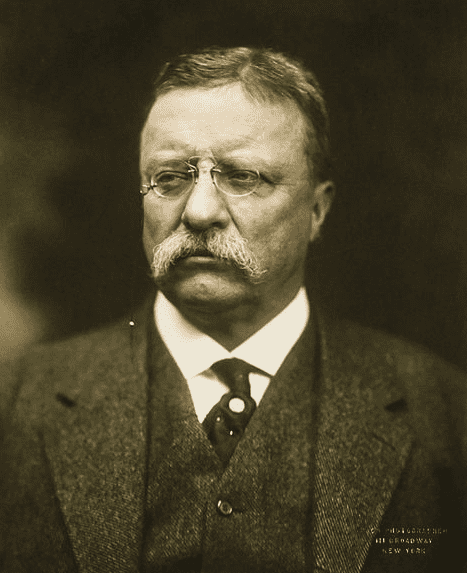
Along with all those accomplishments, Roosevelt was also a naturalist, author, editor, orator, explorer, horseman and big-game hunter. Roosevelt was born 27 October 1858 into great wealth to a long-established, aristocratic family. He went on to fight for reform and progressive causes during his long political career. A weak and sickly child, he built himself into a strong, vigorous man through strenuous activity.
Posthumously awarded the Medal of Honor in 2001 for his bravery on the battlefield, he was also awarded the Nobel Peace Prize in 1906 for helping to end the Russo-Japanese War. In short, Roosevelt was a larger-than-life figure, one widely respected and admired in America and worldwide.
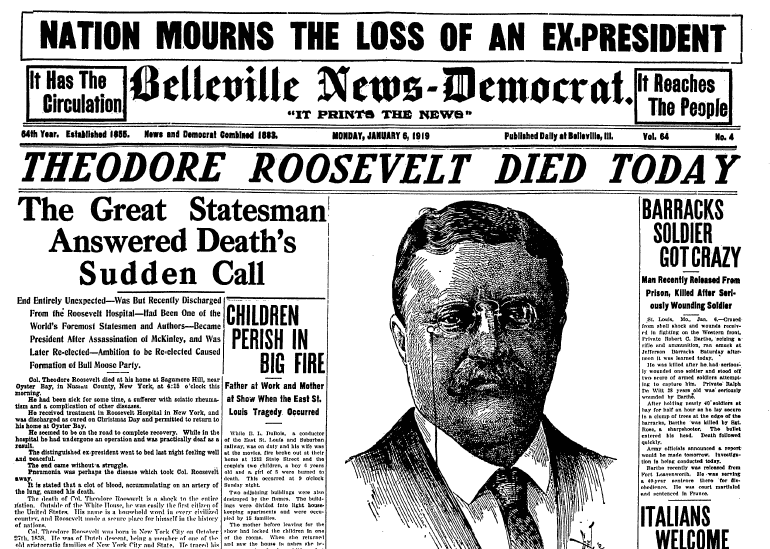
Teddy Roosevelt’s obituary, published on the front page of the Belleville News Democrat on 6 January 1919, included these details of the many attributes and accomplishments of this great man’s incredible life:
The death of Col. Theodore Roosevelt is a shock to the entire nation. Outside of the White House, he was easily the first citizen of the United States. His name is a household word in every civilized country, and Roosevelt made a secure place for himself in the history of nations.
Col. Theodore Roosevelt was born in New York City on October 27th, 1858. He was of Dutch descent, being a member of one of the old aristocratic families of New York City and State. He traced his lineage back to the Revolution and long before that period on American soil. His parents were wealthy and belonged to the capitalistic or aristocratic class, although Roosevelt himself was always extremely democratic in his ways and principles. Roosevelt was a member of the Dutch Reformed Church, but never played religion very strongly.
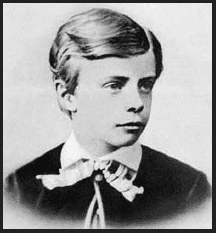
He entered Harvard College in 1876 and was graduated in the class of 1880.
He took up the study of law, but in 1881 was elected to the New York Legislature, and was twice re-elected.
In his second term in the Legislature, he was the candidate of his party for speaker, the majority of the assembly, however, being democratic.
During his third term he served as chairman of the committee on cities and of the special committee which investigated the abuses in the government of New York City.
He early took a stand for good government and honest and clean and decent politics.
He was a delegate to the state convention in New York State in 1884 to choose delegates to the Republican National Convention, and was selected as one of the four delegates-at-large from New York to the National Convention.
Later in the same year, he went to North Dakota and spent most of his time there for several years on a ranch, engaged in cattle raising. The change was made in the interests of his health. He had been weak and sickly and was advised by his physician to go west and live in the open air and sunshine and live the simple life.
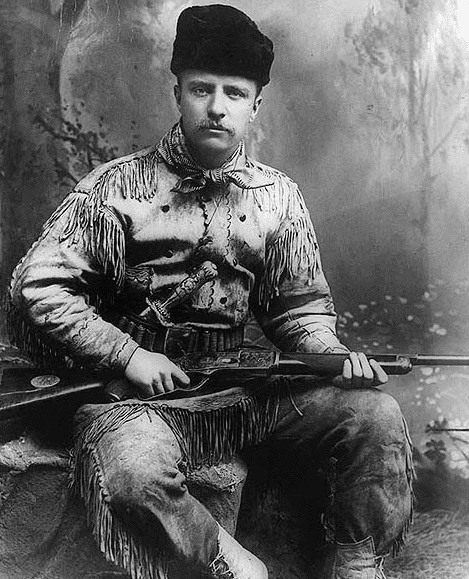
He adopted the habits of the cowboys and roughed it, according to the customs which prevailed in those days in the wild and wooly West. He acquired the art of riding on horseback, and became an expert rifle and revolver shot. During most of his waking hours he lived in his saddle. This life on the margin of civilization was too slow for him, however. Regaining his health and becoming robust and strong, he yearned for the streets and avenues of his native city, where the bright lights burn.
In 1886 he was the Republican nominee for mayor of New York City.
He was appointed a member of the United States Civil Service Commission in May, 1889, by President Benj. Harrison.
He resigned this position in 1895 in order to accept the Presidency of the Police Commission of New York City under Mayor Strong.
In April, 1897, he was appointed Assistant Secretary of the Navy by President William McKinley.
Upon the outbreak of the war with Spain in 1898, he resigned his post and became Lt. Col. of the 1st United States Volunteer Cavalry.
He now began to cash in on the apprenticeship which he had served in the Wild West. He raised the regiment known as the Rough-Riders.
He was promoted to the colonelcy of the regiment, and was popular with the rank and file of men who reposed great confidence in his leadership.
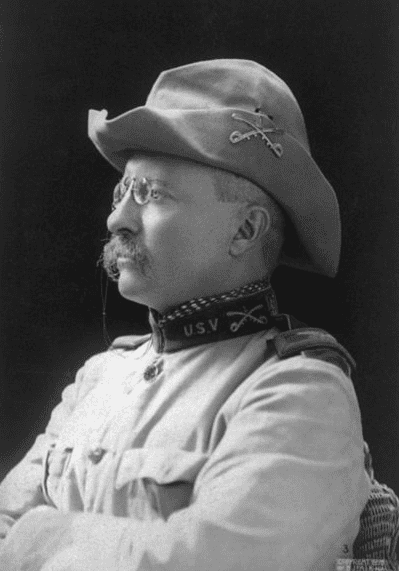
He was in the fights at Las Guasimas and San Juan. His name as a fighter was won at the battle of San Juan Hill.
He was mustered out with his regiment at Montauk, Long Island, in September, 1898. He was nominated shortly afterwards as the Republican candidate for governor of New York and elected in November, 1898.
He was unanimously nominated for Vice President of the United States by the Republican National Convention of 1900 and elected. He succeeded to the Presidency upon the death of President McKinley, by assassination, in Buffalo, on September 14th, 1901.
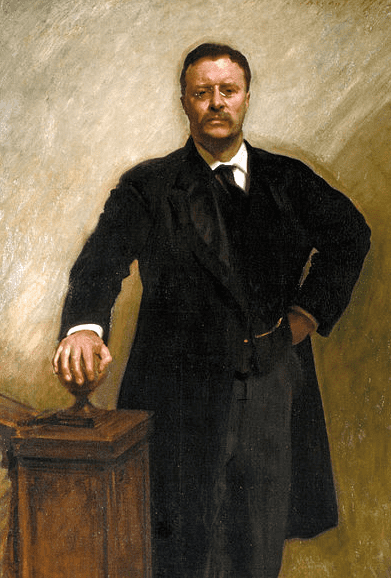
He was nominated for President by the Republicans in 1904 and was elected by a tremendous popular and electoral majority. He beat Alton B. Parker, the Democratic nominee.
While Roosevelt was President the Panama Canal was built and the war between Japan and Russia was fought. He took a hand in the settlement of that bloody conflict and was awarded a Noble Peace Prize for his activities.
The country was rent by panics and strikes during the Roosevelt administration, and he gained notoriety by successfully winding up a coal miners’ strike in the anthracite regions in Pennsylvania which threatened to drag the country into civil war.
Roosevelt was a forceful character and an aggressive man. He believed in the policy of maintaining a big standing army and a powerful navy in our country. He was an advocate of the strenuous life and lived it.
He lived every minute of his life. He split the Republican Party in two in 1912 because the Republican National Convention of that year refused to nominate him for President instead of Taft. He organized the Bull Moose Party on a progressive platform and later closed up the breach by returning to the original fold.
Roosevelt was distinctly a physical force man. In his opinion nature and destiny achieve their purposes through the strongest agency. He had no use for weak men and detested half-hearted measures. He fought the Wilson administration on the ground that it was too slow.
He believed that we should have entered the European War against Germany four years ago.
He was a physical culture expert, having built himself up from a sickly child to a man whose vigor and virility challenged the respect and admiration of the world.
His children were of the same type.
He was a historian. He wrote many books on history. His “History of the Naval War of 1812” was written while he was yet a Harvard student.
He was a biographer. He wrote a biography of “Oliver Cromwell,” his own autobiography and others.
He was an essayist. He wrote more books than many authors whose fame rests upon their writings alone. His essays, in particular, and later his orations, were always a key to his actions.
He was a great critic. He raised hell most of the time. He knew where to hit and hit hard.
He was a good hater and had a good command of English. The results are well known.
He was a natural scientist, a big-game hunter, and explorer and discoverer. His achievements in natural science alone were enough to make him a man of note. He killed lions and tigers and elephants in the wilds of Africa, and discovered the River of Doubt in South Africa.
He was the holder of more than a dozen college degrees, and won fame as an editor on the “Outlook” and the “Metropolitan Magazine.” During the last year he has been an editorial writer for the “Kansas City Star.”
He was a practical reformer, a veteran colonel of cavalry, a former Governor, a former Vice President and a former President.
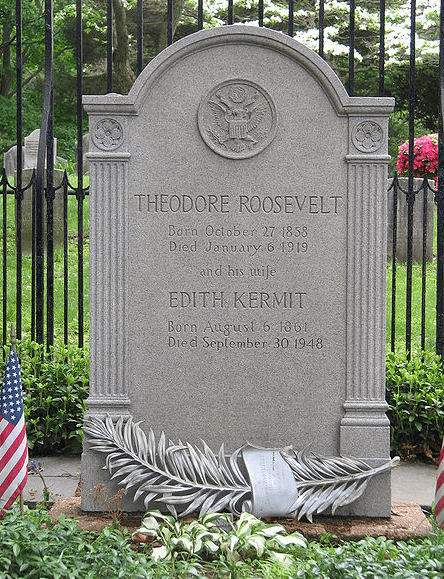
His death marks the end of a notable career, and the most strenuous life in America has reached its illustrious close. The whole nation mourns the loss of Theodore Roosevelt. Had he lived to see the day he might have been the next Republican nominee for President of the United States, and it is not improbable that he would have been re-elected.
Note: FamilySearch International (FamilySearch.org) and GenealogyBank are partnering to make over a billion records from historical obituaries searchable online. The tremendous undertaking will make a billion records from over 100 million U.S. newspaper obituaries readily searchable online. The newspapers are from all 50 states and cover the period 1730 to the present. Find out more at: https://www.genealogybank.com/family-search/
Related Articles:
